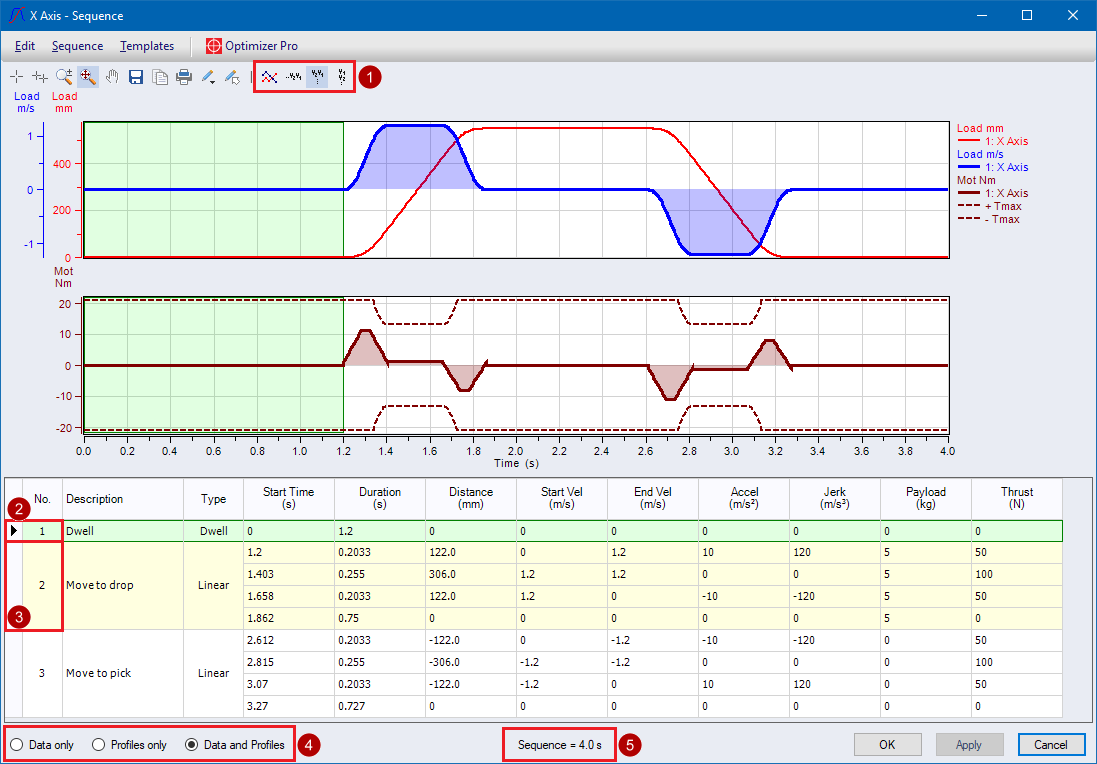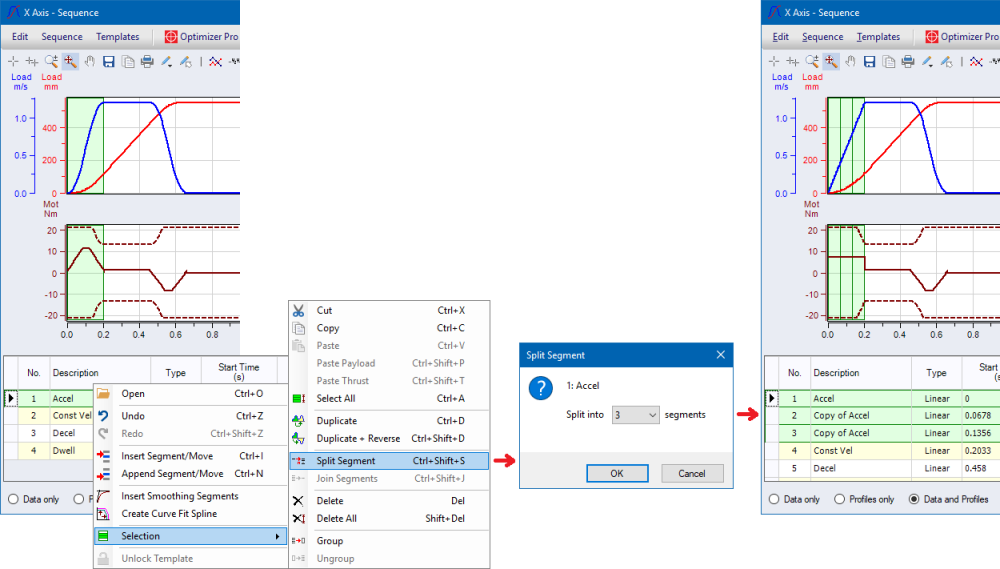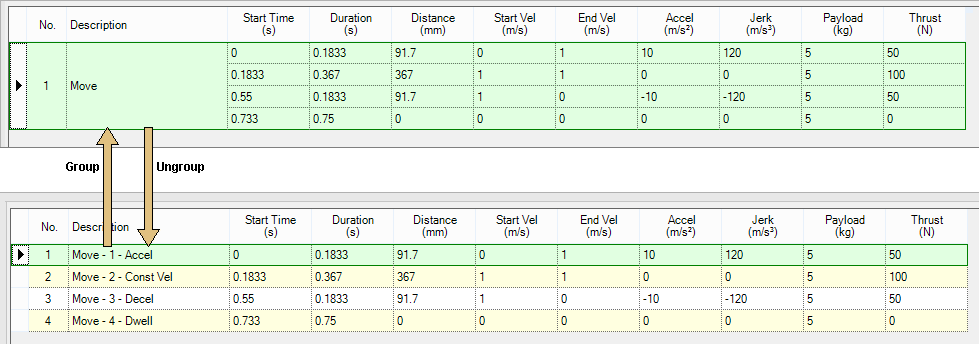Sequence
|
 Overview
Overview
The Sequence form illustrates all move profiles within the cycle, referred to as the sequence of an axis. To coordinate between the timing of other axis moves, you may chart up to 6 profiles, from any axis, using the Configure Profiles form.

|
|
|
||||||
|
|
Double-click on the row select cell (gray) or step number to
bring up the Segment data entry form. Segment data can only be
edited in the Segment form. |
||||||
|
|
Double-click on the row select cell (gray) or step number to
bring up the Move data entry form. Move data can only be
edited in the Move form. |
||||||
|
|
|
||||||
|
|
Displays the time at the end of the last step in the
sequence. Accuracy to 0.1%. E.g. A 100.123456s sequence
time will be displayed as “100.12s” |
 Insert / Append / Delete Moves and
Segments
Insert / Append / Delete Moves and
Segments
Select a Move/Segment, then click Edit at the top left of the form, or right-click on the selected step, and then select Insert, Append or Delete. How to insert a move before Step 2 is shown below.

 Split Segment
Split Segment
The Split Segment feature splits the selected segment into N equal segments that equal the total distance and duration of the original segment. Poly 3/5/7 order segments are split into a continuous N segment spline. All other profile types, a Linear profile type with no jerk is used. Ie. A straight line.
To split a segment, select one segment, then right-click and select "Selection > Split Segment", and specify the number of segments.

 Group / Ungroup
Group / Ungroup
To select the Group or Ungroup function, select a step, then click Edit at the top left of the form, or right-click on the selected step.
The Group function assembles four segments into one move. The four segments must be in the correct order. The first and third segments must have the same profile type with Accel <> 0, and the second and fourth segments must have Constant Velocity and Accel = 0. The Group function is available when the first segment is selected.
The Ungroup function breaks up a move into four segments - Accel, Constant Velocity, Decel and Dwell. Ungrouping allows for the editing of the individual segments.
The Group and Ungroup functions are illustrated below:
